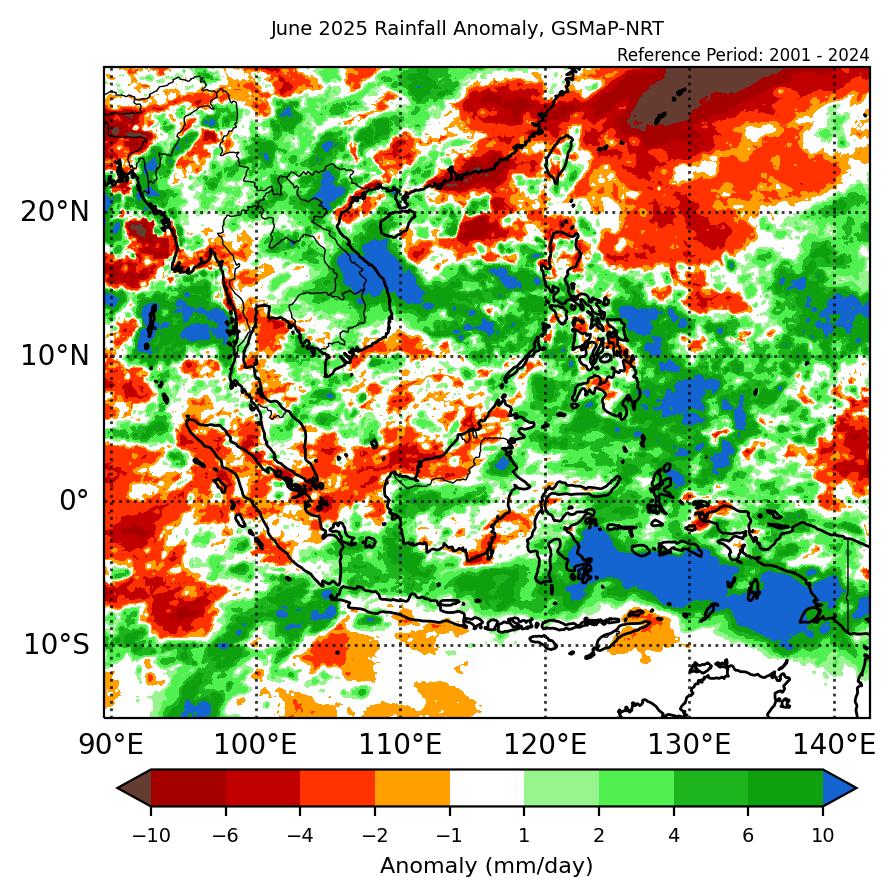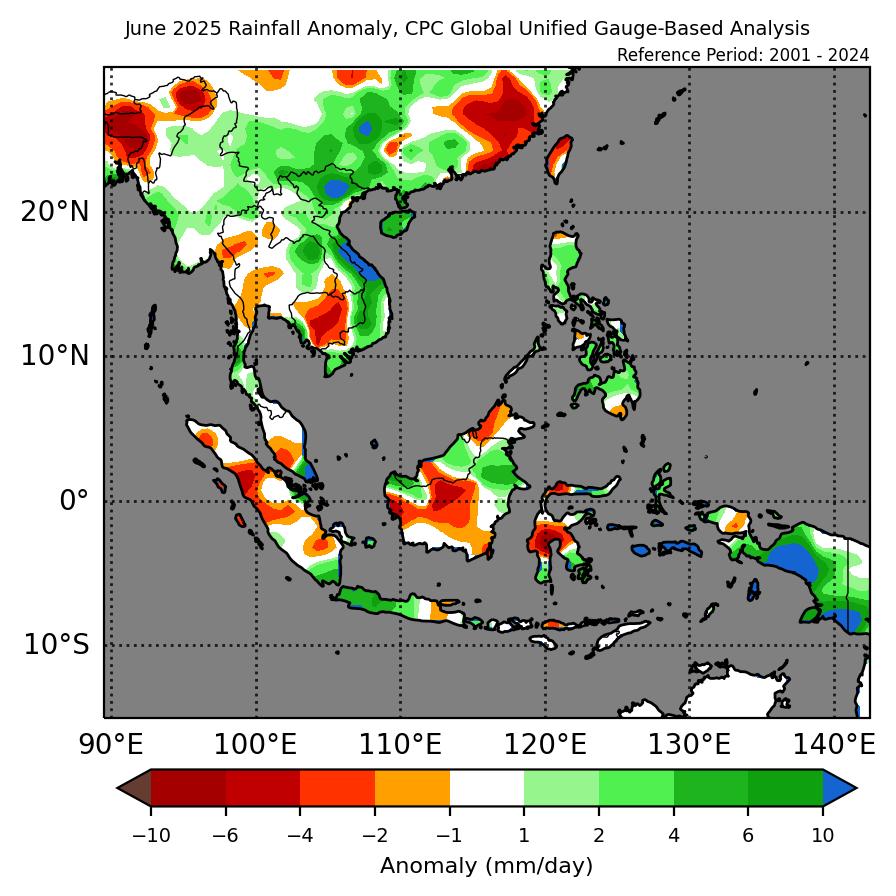Review of Regional Weather for June 2025
1. Overview
1.1 During June 2025, Southeast Asia experienced a mixed of below- to above-average rainfall, with parts of the western Maritime Continent experiencing below- to near-average rainfall and above-average rainfall over the southeastern Maritime Continent (Figure 1). The largest positive (wetter) anomalies were recorded over central Viet Nam. However, there were notable disagreements between GSMaP-NRT and CPC Unified Gauge datasets. CPC Unified Gauge recorded more regions with below-average rainfall, in particular over parts of southeastern Mainland Southeast Asia and the central Maritime Continent, where GSMaP-NRT recorded near- to above-average rainfall.
1.2 The observed rainfall anomaly pattern of below-average rainfall over parts of western Mainland Southeast Asia is mostly consistent with the predictions from the subseasonal weather outlooks for June 2025 (26 May – 8 June 2025, 9 – 22 June 2025, and 23 June – 6 July 2025). The subseasonal weather outlooks for the other regions were mixed throughout the June 2025 period and is also reflective in the mixed of below- to above-average rainfall recorded. The observations are also somewhat consistent with the seasonal outlook for June 2025, where below-normal rainfall was predicted for parts of the western Maritime Continent and above-normal rainfall for parts of the southern Maritime Continent.
1.3 Below-average and near-average temperatures were recorded over much of Mainland Southeast Asia in June 2025, while near-average and above-average temperatures were recorded over most of the Maritime Continent, except over the Philippines and Papua where below-average temperature were recorded (Figure 2). The coldest anomalies (-0.5°C – -1°C below average) were recorded over parts of Cambodia and Viet Nam while the warmest anomalies (1°C – 2°C above average) were recorded over central Sumatra.
2. Climate Drivers
2.1 There was no discernible Madden-Julian Oscillation (MJO) signal for most of June based on the RMM diagram (Figure 3). At the start of the month, the MJO was inactive based on the RMM Index. An MJO signal developed over the Western Pacific in the end of Week 1, propagated eastwards through the Western Pacific (Phases 6 and 7) by the middle of Week 2. The MJO signal decayed over the Western Hemisphere (Phase 8) in Week 3 and remained inactive for the rest of the month. At this time of the year, Phases 7 and 8 tend to bring drier conditions to parts of the Maritime Continent while Phase 4 tends to bring wetter conditions to this region. However, with the MJO being only briefly active during May, the MJO had little effect on the overall recorded rainfall during the month.
2.2 ENSO-neutral conditions were present in June 2025.





